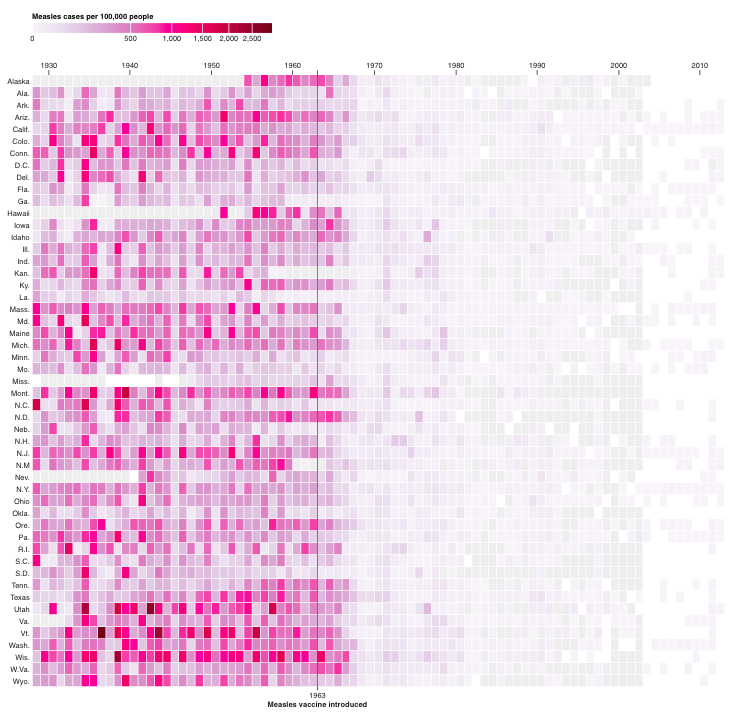09 Oct The historical impact of vaccines
Notes from the Medical Director
 Dr. Kristen Feemster is the Medical Director of the Philadelphia Department of Public Health’s Immunization Program.
Dr. Kristen Feemster is the Medical Director of the Philadelphia Department of Public Health’s Immunization Program.The historical impact of vaccines
It can be so easy to lose sight of the incredible impact that vaccines have had on our society. Mike Bostock, a data visualization specialist, reminds us of the history of the measles vaccine with the data visualization below.
Measles used to be incredibly common, but when the vaccine was introduced to the US in 1963, cases plummeted. Bostock’s visualization shows this clearly: moving from left to right, the darker colors begin to fade, just as the number of cases in each state decline immediately following the introduction of the vaccine.
If there are so few measles cases in the U.S., do we still need to maintain high immunization rates? Yes. The dramatic impact of measles vaccine introduction is testament to both the individual and community effects with immunizations. Vaccinated children were no longer getting infected themselves, and they could no longer spread measles to others. But to see the community effects of measles vaccines, we do need high vaccination rates. Measles is one of the most contagious vaccine-preventable disease out there so almost everyone needs to be protected to stop transmission. When we keep our measles vaccination rates above at least 92%, we eliminate measles outbreaks.
Measles still affects about 20 million people per year worldwide. No other vaccine-preventable illness causes as many deaths. Most cases occur in developing areas of Africa and Asia but there are also tens of thousands of cases in several European countries due to decreasing immunization rates. In fact, the Centers for Disease Control and Prevention has issued travel advisories for places from which many of us may receive visitors or visit ourselves. So the likelihood of being exposed to measles is very real. If communities do not maintain high immunization rates, outbreaks can happen here as well.
Here at the Philadelphia Department of Public Health, we’ve done similar work to highlight the history of vaccines and their important public health impact. The history of vaccine-preventable diseases in Philadelphia shows how these diseases used to kill nearly 3,000 Philadelphians per year. As more vaccines were licensed and distributed, this death toll fell steadily until the modern era, when vaccine-preventable diseases only kill 11 Philadelphians per year. Let’s work together to make sure these trends don’t change.
Measles in the USA


